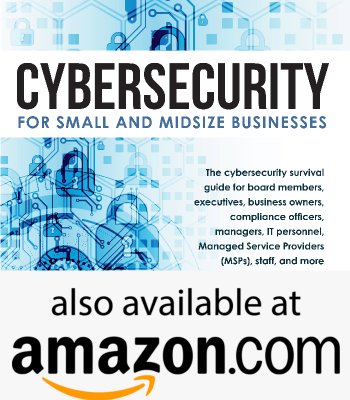This book expands on the NIST Cybersecurity Framework subcategories and informative references to help small businesses with its implementation.
In the spirit of accomplishing our vision of helping Small and Midsize Businesses improve their cybersecurity posture, as a contribution, we are making the eBook available for FREE in PDF, ePUB (Kindle and Apple Books), and Mobi (other devices) formats to everyone.
Paperback copies are available on Amazon.


